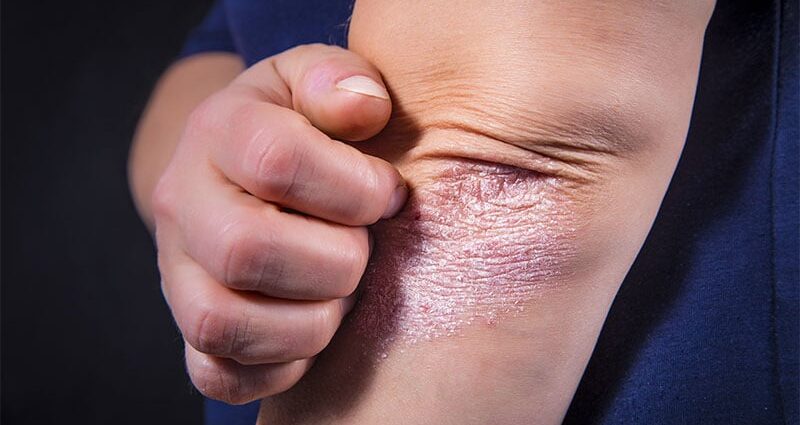TOPLINE:
Interleukin (IL)-23p19 inhibitors guselkumab and risankizumab demonstrated the highest drug survival for effectiveness and safety comparable with ustekinumab over 2 years, exceeding that of all other biologics. IL-17 receptor inhibitor brodalumab showed comparable effectiveness and safety with adalimumab and secukinumab.
METHODOLOGY:
- Researchers conducted a cohort study using data from the British Association of Dermatologists Biologics and Immunomodulators Register from November 2007 to June 2023 and compared the drug survival of all current commonly used biologics in patients with chronic plaque psoriasis (median age at therapy initiation, 48 years).
- The analysis included 19,034 treatment courses across the following biologics: Tumour necrosis factor-alpha inhibitor adalimumab (n = 6815), IL-12/23p40 inhibitor ustekinumab (n = 5639), IL-17A inhibitors secukinumab (n = 3051) and ixekizumab (n = 1072), IL-17 receptor inhibitor brodalumab (n = 367), and IL-23p19 inhibitors guselkumab (n = 1258) and risankizumab (n = 832).
- Multivariable flexible parametric models assessed drug survival, with discontinuation due to ineffectiveness and adverse effects reported separately. Researchers also calculated the restricted mean survival time (RMST) at 2 years for each biologic and the difference in RMST between all comparator biologics.
- The overall median follow-up duration was 2.3 years.
TAKEAWAY:
- Guselkumab and risankizumab demonstrated the highest adjusted survival time for effectiveness (RMST, 1.93 years for both; 95% CI, 1.91-1.95 and 1.90-1.96 years, respectively).
- Risankizumab showed the highest survival for safety (1.94 years; 95% CI, 1.92-1.96 years), followed by guselkumab (1.92 years; 95% CI, 1.90-1.94 years) and ustekinumab (1.92 years; 95% CI, 1.91-1.93 years).
- Brodalumab exhibited a lower adjusted survival time for effectiveness (1.75 years; 95% CI, 1.69-1.81 years) than most biologics except secukinumab and adalimumab and lower drug survival for safety than all biologics except the IL-17A inhibitors and adalimumab.
- Among the IL-17A inhibitors, secukinumab exhibited significantly lower adjusted drug survival than ixekizumab for effectiveness but had a significantly higher safety profile.
- Prior exposure to biologics was associated with a decline in survival, with significantly larger reductions observed for IL-17 inhibitors.
IN PRACTICE:
“Drug survival is high with IL23p19 inhibitors. People with psoriasis persist with IL23p19 inhibitors up to an estimated 21 weeks more for effectiveness and 13 weeks more for safety compared with other biologics over a 2-year period on average,” the authors wrote. “This evidence on the absolute difference in time persisted on biologic may help clinicians and patients make an informed decision on choosing the right biologic, including differentiating between different classes of biologics based on the patient’s history of having PsA [psoriatic arthritis] or not, their treatment history, and whether they prioritize treatment longevity,” they added.
SOURCE:
This study was led by Leila Motedayen Aval, The University of Manchester, The Dermatology Centre, Salford Royal Hospital, Northern Care Alliance NHS Foundation Trust, Manchester Academic Health Science Centre, Manchester, England. It was published online on May 29, 2025, in the Journal of the European Academy of Dermatology and Venereology.
LIMITATIONS:
This study was limited by missing data for newer biologics, particularly IL-17A inhibitors and IL-23p19 inhibitors, and shorter follow-up periods for newer treatments. Residual selection bias may have been present. Additionally, researchers could not evaluate dosing regimens due to missing data for over 50% of dosing frequency information for secukinumab, and results may not be generalisable beyond the UK and Republic of Ireland healthcare systems.
DISCLOSURES:
The British Association of Dermatologists Biologic Register Ltd receives income from AbbVie, Almirall, Eli Lilly, J&J, Leo Pharma, Novartis, Samsung Bioepis, UCB, BI, and BMS for providing pharmacovigilance services. This research was supported by the National Institute for Health and Care Research Manchester, Guy’s and St Thomas’ and Newcastle’s Biomedical Research Centres. Several authors reported receiving grants or personal fees and having other ties with various sources.
This article was created using several editorial tools, including AI, as part of the process. Human editors reviewed this content before publication.

